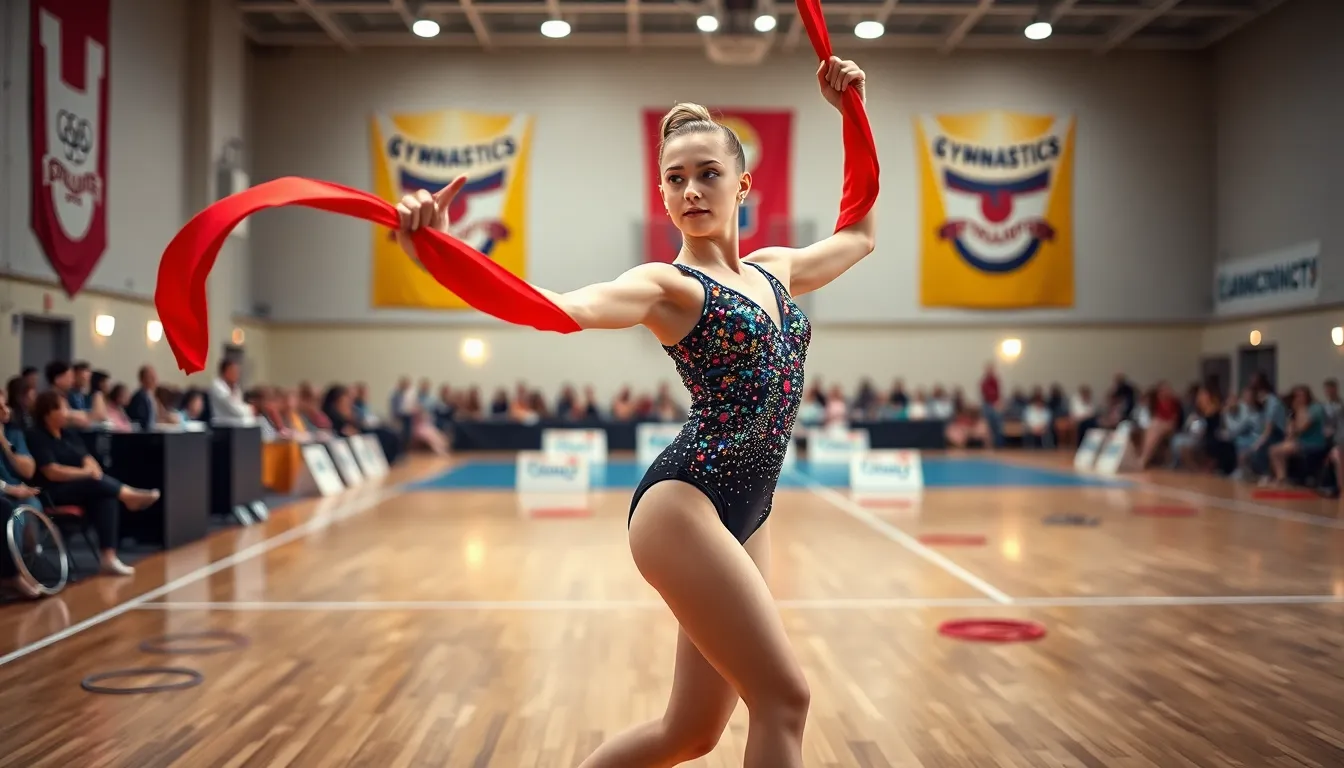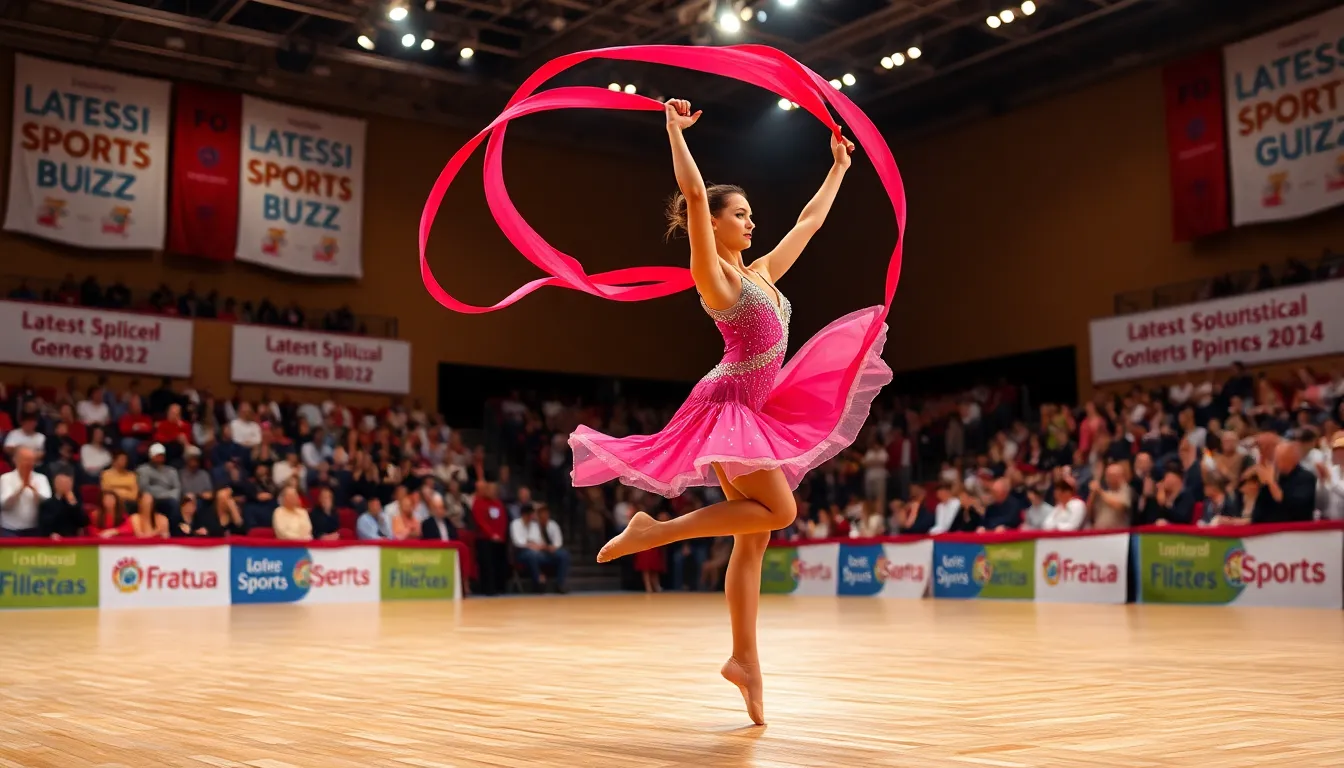Rhythmic gymnastics, a stunning blend of artistry and athleticism, captivates audiences worldwide. With its origins tracing back to the late 19th century, this sport continues to evolve, showcasing the elegance of its routines and the incredible skills of its athletes. In this text, we investigate into the latest happenings, trends, and key figures shaping the rhythmic gymnastics landscape, shedding light on the beauty and complexity of this captivating sport.
Table of Contents
ToggleOverview of Rhythmic Gymnastics

Rhythmic gymnastics is a unique sport that combines elements of ballet, gymnastics, and dance, performed primarily with handheld apparatuses such as ribbons, hoops, balls, clubs, and ropes. Competitors execute choreographed routines that display flexibility, coordination, and grace, all while incorporating the use of music to enhance the performance. Traditionally contested by women, rhythmic gymnastics became an Olympic sport in 1984, showcasing the best athletes from around the globe.
The sport is governed by the International Gymnastics Federation (FIG), ensuring standardized rules and scoring systems to maintain fairness and integrity during competitions. Participants are judged on criteria such as artistry, difficulty, and execution, making every performance not just a test of physical ability but an expression of creativity and emotion.
Key Elements of Rhythmic Gymnastics
The mesmerizing performances in rhythmic gymnastics hinge on several key elements that structure each routine. Here are the most vital components:
Apparatuses
Athletes use various apparatuses, each requiring different skills:
- Ribbons: Measured at a length of 6 meters, ribbons allow gymnasts to create intricate patterns and fluid movements.
- Hoops: Competitors perform with hoops that have a diameter of 80 to 90 cm, showcasing dynamic transitions and balances.
- Balls: Weighing 400 grams, the ball is used to highlight the gymnast’s control and gracefulness.
- Clubs: Gymnasts control two clubs simultaneously, reflecting high levels of coordination and dexterity.
- Rope: This apparatus tests strength and agility through jumping and swinging techniques.
Choreography
The choreography in rhythmic gymnastics is integral, blending complex movements with creative expression. Each routine must not only demonstrate technical prowess but also engage the audience through rhythm and music.
Judging Criteria
Judges evaluate performances based on execution, artistry, difficulty, and the routine’s composition. Each component adds to the total score, emphasizing the need for athletes to excel across multiple areas.
Recent Competitions and Highlights
The competitive landscape of rhythmic gymnastics remains vibrant, with several key events showcasing immense talent.
World Championships
This year’s FIG Rhythmic Gymnastics World Championships were held in Sofia, Bulgaria, where athletes displayed breathtaking routines. Notable performances included the Russian team, who once again dominated the podium, demonstrating both individual and team excellence.
European Championships
The European Championships highlighted emerging talents from across the continent. Gymnasts from Italy and Bulgaria made instances of brilliance, underscoring the sport’s growth in these regions.
Olympic Qualifiers
As countries prepare for the upcoming 2024 Paris Olympics, the qualification rounds have been particularly intense. Each athlete is keen to secure a spot among the elite, leading to nail-biting performances and fierce competition.
Profiles of Top Athletes
A closer look at some of the top athletes in rhythmic gymnastics reveals the dedication and talent that define the sport.
Dina Averina
Russian gymnast Dinara Averina is widely regarded as one of the most skilled and successful rhythmic gymnasts. Known for her elegant yet powerful routines, she has clinched multiple world titles and continues to be a formidable contender on the international stage.
Linoy Ashram
Israel’s Linoy Ashram has made waves in the rhythmic gymnastics community, capturing gold at the Tokyo 2020 Olympics. Her unique style combines artistry with technical skill, earning her a place among the best in the sport.
Aleksandra Soldatova
Another standout performance has come from Aleksandra Soldatova, also from Russia. With her memorable routines and a deep emotional connection to her performances, she remains a crowd favorite.
Innovations and Trends in Rhythmic Gymnastics
As rhythmic gymnastics evolves, several innovations and trends are shaping its future.
Technology in Training
Advanced training methods, including the use of video analysis and virtual reality, enhance athletes’ performances. Coaches use technology to assess routines, providing real-time feedback and aiding in the refining of skills.
New Routines and Styles
Contemporary influences have seeped into rhythmic gymnastics, with routines increasingly reflecting broader dance and performance art trends. This openness to diverse styles has propelled creativity and allowed athletes to express their individuality more vividly.
Increased Global Popularity
The sport is gaining more attention globally, leading to increased participation. Countries not traditionally associated with rhythmic gymnastics are investing more in programs, nurturing new talents and expanding the sport’s reach beyond established powerhouses.
The Future of Rhythmic Gymnastics
Looking ahead, the future of rhythmic gymnastics appears bright, as the sport embraces both tradition and innovation.
Youth Engagement
Efforts are being made to engage younger generations by enhancing accessibility in schools and community sports programs. This focus on grassroots initiatives may result in a surge of interest and participation.
Olympic Aspirations
With the inclusion of rhythmic gymnastics in the Olympic Games, the sport’s visibility is expected to grow. Upcoming events, including the 2024 Paris Olympics, present opportunities for athletes to inspire the next generation.
Sustainability Initiatives
As the global sports community increasingly prioritizes sustainability, rhythmic gymnastics is adapting by incorporating environmentally friendly practices into training and competitions. This commitment not only helps the sport align with global standards but also attracts environmentally conscious young athletes.
Conclusion
Rhythmic gymnastics is much more than just a sport: it embodies a thrilling confluence of discipline, artistry, and athleticism. As new talents emerge and the sport continues to develop, both in terms of technical advancements and creative expression, the future looks promising. Staying attuned to the latest buzzing developments in rhythmic gymnastics not only highlights its athletes but also the cultural impact it has on audiences worldwide.




